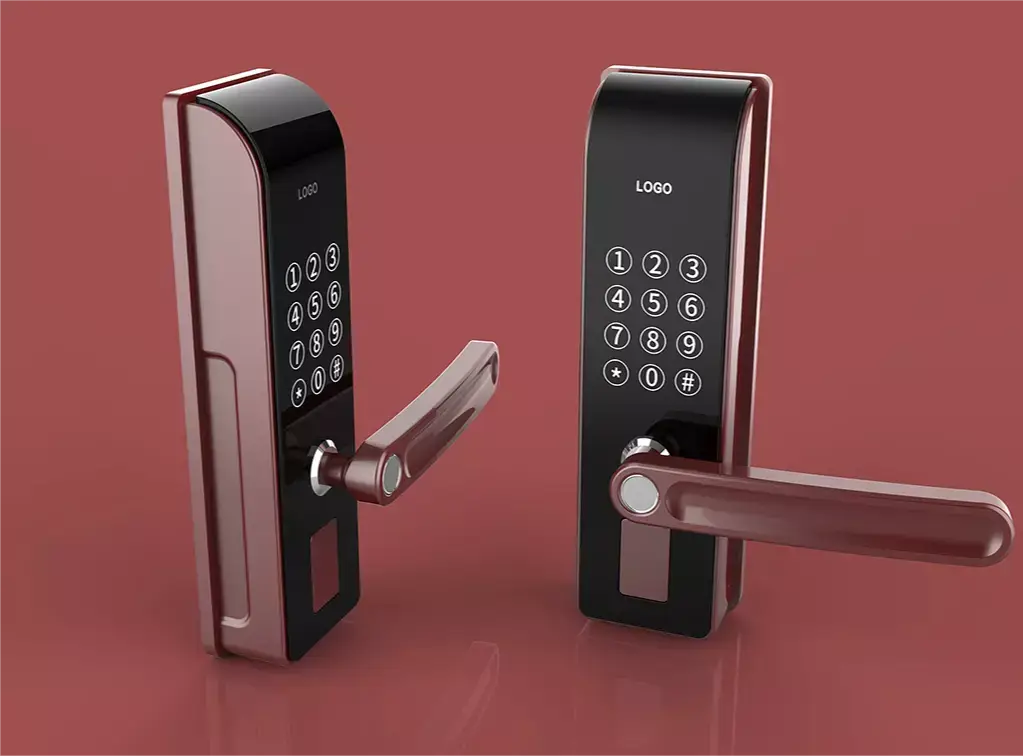How to Tackle 5 Battery Issues in Smart Door Locks?
Smart door locks have gained immense popularity in recent years due to their convenience, efficiency, and enhanced safety. However, some users face challenges when these locks fail to meet quality standards. One common issue is rapid battery depletion, leaving users in a frustrating situation where “intruders can’t be stopped, and the owner can’t get in.” Let’s explore the reasons behind this problem and how to address it effectively.
Understanding the Working Principles of Smart Door Locks
Smart door locks operate using either lithium batteries or dry batteries as power sources. These batteries drive internal components like motors, electronic lock tongues, and fingerprint recognition modules.
Types of Smart Door Locks:
- Semi-Automatic Locks:
These locks feature handles on both sides and use a clutch powered by batteries. Opening and closing the lock requires pressing the handle, making it more energy-efficient. Typically, four AA dry batteries power these locks. - Fully Automatic Locks:
These have a built-in motor that drives the lock tongue. The motor provides the power to lock and unlock the door, consuming more energy. Such locks generally rely on 4200mA lithium batteries.

Why Do Smart Door Locks Run Out of Battery Quickly?
According to the national standard GA374-2019, the durability requirement for smart locks has increased to 10,000 cycles. Despite this, rapid battery drainage can occur due to several reasons:
1. Incorrect Charging Practices
For lithium battery-powered locks, using improper fast-charging plugs may cause high voltage, damaging the battery and reducing its capacity.
2. Poor Battery Quality
For locks using dry batteries, inferior batteries can lead to short lifespans or leakage, potentially damaging the lock’s internal components.
3. Malfunctioning Hardware
Issues like mismatched sliding covers, malfunctioning motors, or screens that fail to turn off can accelerate battery depletion.
4. Environmental Factors
Extreme temperatures, humidity, or poor ventilation can affect battery performance, causing faster power consumption or even leakage in damp conditions.

What to Do When a Smart Door Lock Runs Out of Battery?
1. Replace or Recharge the Battery
- For Dry Batteries: Open the battery compartment (usually on the interior side), remove the old batteries, and replace them with new ones of the same type. Ensure proper polarity alignment.
- For Lithium Batteries: Use a USB cable to connect the lock to a power bank or outlet for emergency charging.
2. Use the Mechanical Backup Key
Most smart locks include a mechanical key for emergencies. Keep the spare key in an accessible location to avoid being locked out.
3. Seek Professional Assistance
If you can’t resolve the issue, contact the manufacturer’s customer support or a professional technician for repair or guidance.

How to Extend the Battery Life of Your Smart Door Lock?
1. Use Reliable Batteries
Choose high-quality batteries to ensure durability and performance. Avoid frequent unlocking in short intervals to reduce wear and tear.
2. Minimize Power-Intensive Features
Turn off features like always-on display screens or unnecessary alerts if they are not required.
3. Regular Maintenance
- Clean the lock regularly to keep components in optimal condition.
- Update the lock’s software if the manufacturer provides updates to enhance battery efficiency.

Helpful Tips for Using Smart Door Locks
- Waterproofing: Avoid using the lock with wet hands to prevent short circuits.
- Clean Fingerprint Scanners: Gently clean the scanner to maintain fingerprint recognition accuracy.
- Lubricate the Lock Cylinder: Apply lubricating oil to the cylinder if it jams, ensuring smooth operation.
- Avoid Unauthorized Disassembly: Consult the user manual or contact customer support instead of attempting to disassemble the lock yourself.
Conclusion
Smart door locks have become a popular choice for consumers due to their convenience and security. However, issues such as rapid battery depletion can cause inconvenience. These locks are powered by either lithium or dry batteries, and factors like incorrect charging, poor battery quality, hardware malfunctions, and environmental conditions can contribute to fast battery drain.
To address this, users can replace or recharge the batteries, use mechanical backup keys, or seek professional assistance. Proper maintenance, using reliable batteries, minimizing unnecessary features, and keeping the lock clean can help extend battery life. Following these tips ensures optimal performance and longevity of smart door locks, enhancing user convenience and security.
